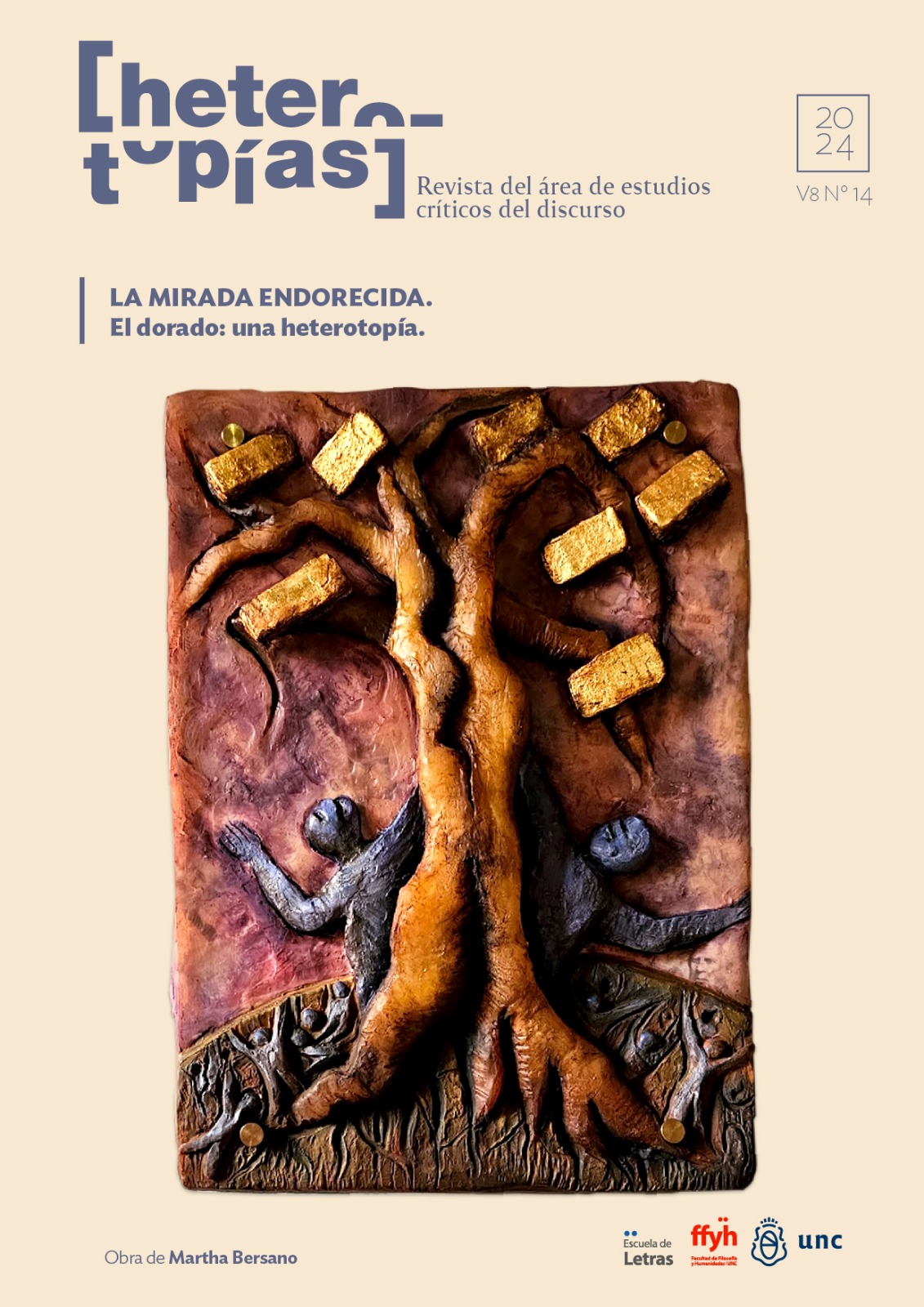Gold Came from the Sky: Golden Myths and New Ecologies of Knowledge in Contemporary Latin American Art
Main Article Content
Abstract
Of extraterrestrial origin, created by supernova explosions and deposited on the surface of the Earth geological eras ago through meteorites, gold became the engine of the colonial extractivist enterprise. This process deeply marked the history of Latin America. For all these reasons, gold and, specifically, the legend of El Dorado, are recurring themes in contemporary Latin American art. Integrating cosmological, ritual, and indigenous knowledge with industrial processes, the works of artists such as the duo Mazenett Quiroga, Carolina Caycedo, and Juan Covelli (Colombia), Anna Bella Geiger and Laura Vinci (Brazil), and Pedro Terán (Venezuela) explore the interdependence of the North and the global South from a critical view of colonial history. In the context of the increasing environmental damage caused by mega-mining in the region, these artists enable alternative ways of understanding and valuing this precious mineral. They navigate between past and present, science and legend, relativizing the market value of their works. Using the contemporary conditions of digital technology production and cognitive capitalism as matrices of fiction and new ecologies of knowledge, they explore the connection between Latin American identity, different time scales, and non-human agencies in the Anthropocene.
Downloads
Article Details

This work is licensed under a Creative Commons Attribution-NonCommercial-ShareAlike 4.0 International License.
Those authors who have publications with this journal, accept the following terms: Those authors who have publications with this journal, accept the following terms:
a. The authors will keep their copyright and guarantee to the journal the right of first publication of their work, which will be simultaneously subject to the Creative Commons Attribution - Non-Commercial - Share Alike (by-nc-sa) Attribution License; no commercial use of the original work or any derivative works is allowed, the distribution of which must be done with a license equal to the one that regulates the original work.
b. Authors may adopt other non-exclusive license agreements for the distribution of the published version of the work (e.g., deposit it in an institutional telematic archive or publish it in a monographic volume) provided that the initial publication in this journal is indicated.
c. Authors are allowed and recommended to disseminate their work through the Internet (e.g. in institutional telematic archives or on their website) before and during the submission process, which may lead to interesting exchanges and increase the number of citations of the published work. (See The effect of open access).
How to Cite
References
Armada, Martín (2023): El oro vino del cielo. Editorial Caleta Olivia. Buenos Aires. Argentina.
Borges, Jorge Luis (2012 [1960]): “Del rigor de la ciencia”. En El hacedor. Ediciones De Bolsillo. Barcelona
De Santos Sousa, Boaventura (2018): “Las ecologías de saberes”. En Construyendo las epistemologías del Sur. Volumen I. Maria Paula Meneses. João Arriscado Nunes. Carlos Lema Añón. Antoni Aguiló Bonet. Nilma Lino Gomes Editores/as. CLACSO. Buenos Aires.
Chakravarty Dipesh (2009): “The Climate of History: Four Theses”. En Critical Inquiry, Vol. 35, No. University of Chicago Press. P. 206-207.
Cusicanqui, Silvia Rivera (2014): “El principio Potosí. Otra mirada a la totalidad”. En Decolonial Gesture. Volume 11. Issue 1. https://hemisphericinstitute.org/es/emisferica-11-1-decolonial-gesture/11-1-essays/e111-essay-the-potosi-principle-another-view-of-totality.html
De Diego, Estrella (2016): “Anna Bella Geiger. Geografía física y humana”. Centro Andaluz de Arte Contemporáneo. Sevilla. https://www.caac.es/docms/txts/abg_txt01.pdf
Gómez-Barris, Macarena (2021): “Introducción. Perspectivas sumergidas”. En La zona extractiva. Ecologías sociales y perspectivas decoloniales. Editorial Metales pesados. Santiago de Chile. P. 17-27.
Iglesias Lukin, Aimé; Jojima, Tie; Sullivan J. Edward. (2023) “El Dorado. Myths of Gold”. AS/COA. Americas Society/Council of the Americas. New York.
Kupchick, Cristian (2008): “Capítulo 9. Los falsos dorados”. En La leyenda de El Dorado y otros mitos del descubrimiento de América: La auténtica historia de la búsqueda de riquezas y reinos fabulosos en el Nuevo Mundo. Editorial Nawtilus. Madrid. P. 118-274.
Ludmer, Josefina (2010): “Introducción”. En Aquí América Latina. Una especulación. Eterna Cadencia. Buenos Aires, Argentina. P.9.
Page, Joana (2021): “A Planetary Art beyond the Human”. En Decolonizing Science in LatinAmerican Art. University College London. UK.
Pratt, Mary Louise (2008): “Introducción: La crítica en la zona de contacto” en Ojos imperiales. Literaratura de viajes y transculturación. Traducción de Ofelia Castillo. Editorial Fondo de Cultura Económica, México.
Pratt, Mary Louise (2023): “Planetary as Radical Heterogeneity: A Conversation with Mary Louise Pratt'”. Entrevista de Jens Andermann y Gabriel Giorgi. En Handbook of Latin American Environmental Aesthetics. Edición de Jens Andermann, Gabriel Giorgi y Victoria Saramago. De Gruyter Publishing Press, Boston. P. 442.
Rogers, Charlotte (2019): “Introduction”. En Mourning El Dorado. Literature and Extractivism in the Contemporary American Tropics. University fo Virginia Press. P. 7-12.
Terán, Pedro (2024): “Pedro Terán habla de La escalera de Manoa”. En revista Estilo edición junio 2024. https://revistaestilo.org/2024/06/06/pedro-teran-habla-de-la-escalera-de-manoa-cronotopias/
Uriarte, Jon (2022): “Imaginar. Juan Covelli. Tesoro especulativo”. Catálogo Festival Getxo Photo. Euskadi, España. https://archivo.getxophoto.com/en/archive/2022-to-imagine/artists-2022/juan-covelli/
Venable, Shannon L. (2011): Gold: A Cultural Encyclopedia. ABC Clio/Bloomsbury Press. NY. P. 10-23.
Willbold, M., Elliott, T. y Moorbath, S. (2011): “The tungsten isotopic composition of the Earth’s mantle before the terminal bombardment”. Nature 477. P. 195–198. https://doi.org/10.1038/nature10399
